| |
|
|
| Lakefield National Park - Dingo Waterhole |
 |
August 11 - 13 2019 |
| |
|
|
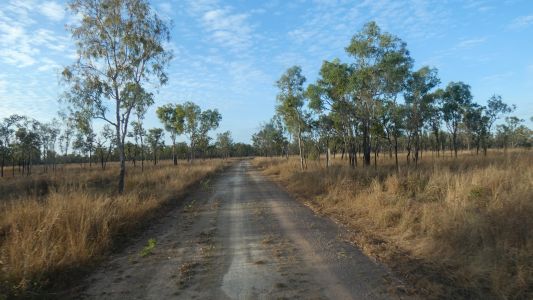 |
|
Six of one, half a dozen of another. We took the road
directly south from Bizant. My schematic map shows it as the main route,
the roads more to the west are possibly better maintained. But this is easy
going. |
| | | |
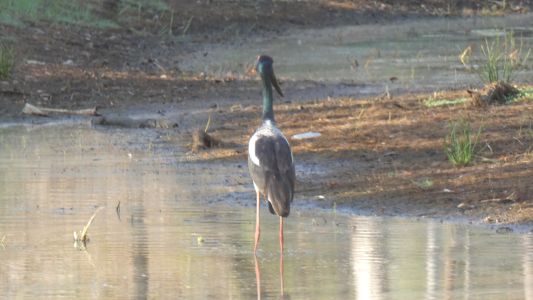 |
|
And provided a chance encounter with a Jabiru. We are now
a tad baffled as to why they are also called black-necked storks as the neck
is far from black - as so often happens with feathers in different light. |
| | | |
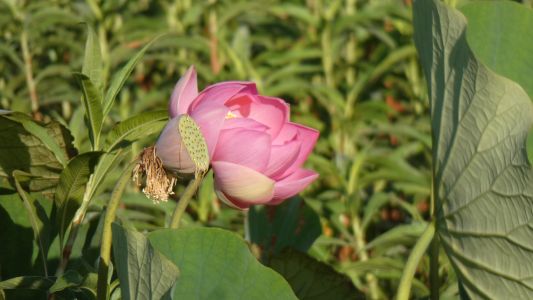 |
|
Red lily lagoon had a road closed sign at the main road. So
we walked the km to the shelter on the east side of the lagoon. Sadly there
is a section of the boardwalk missing. We performed our own risk
assessment and walked as far as we could on the boardwalk.
Relatively early morning there are some lilies open. And a few seed
heads. These are the lotus flowers we met in South East Asia and ate at Lake
Li Yong in China.
They are very different to the white lilies in other lagoons in the park.
Apart from the difference in flowers and seed heads the leaves stand proud
of the water and follow the sun. We wonder if they have ocurred here
naturally. |
| | | |
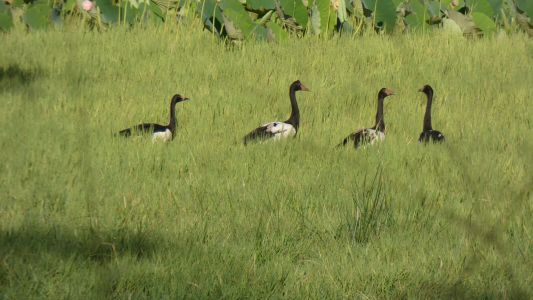 |
|
The lagoon is fenced. Which means the pigs can't reach it.
Which means grass grows around the edge. Which means magpie geese can graze
in the meadow. We are reminded of Lake Takern in Sweden. |
| | | |
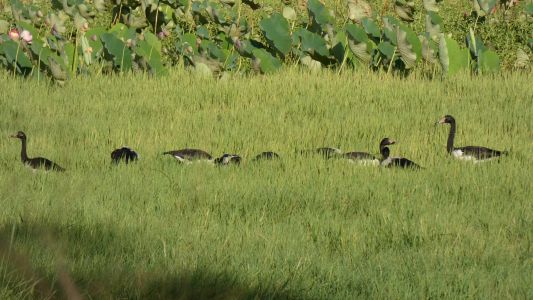 |
|
We stood for a while, more geese slowly appeared, and they
settled back to feeding. |
| | | |
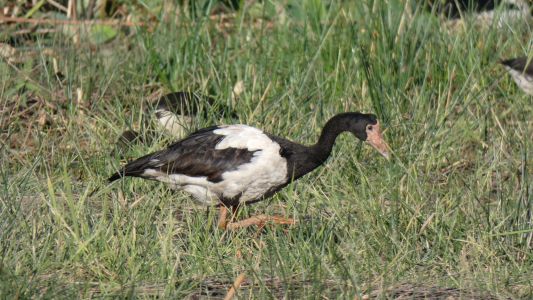 |
|
The lumpy head is a feature of adults. The young have
rounded heads. |
| | | |
 |
|
Mostly lotus flowers, there are some white lilies with
their leaves lying on the surface of the water. |
| | | |
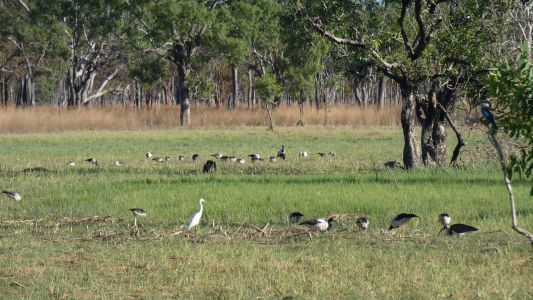 |
|
The flock grew. |
| | | |
 |
|
At White Lily Lagoon we watched the flock of Diving
Whistling Geese. They do a brilliant version of a duck dive, as one may
expect, which in the past we've tried to imitate while snorkeling. Nice to
see how the professionals do it. |
| | | |
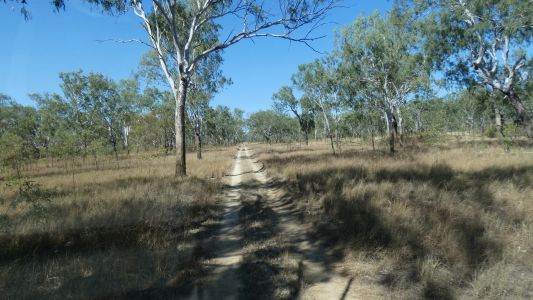 |
|
The track into Dingo Waterhole is easy, though a few tight
places with creekside vegetation. |
| | | |
 |
|
I opt for a walk upstream while Ali plays her mandolin.
Nice to see a small flock of Double-Barred Finches. They are difficult to
picture in dense riverside growth. |
| | | |
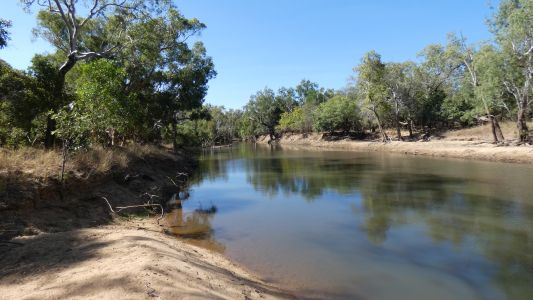 |
|
I had visions of walking around the end of the waterhole
and later exploring some waterholes a couple of km to our north east.
However, the first thing I discovered was the water was flowing, and the
second was that we are camped next to a small branch of the Normanby River.
The main stream is impassable to us. |
| | | |
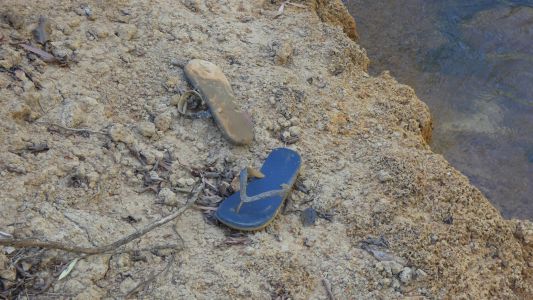 |
|
On the way back, after crossing our small branch, I noticed
I wasn't the first this year. |
| | | |
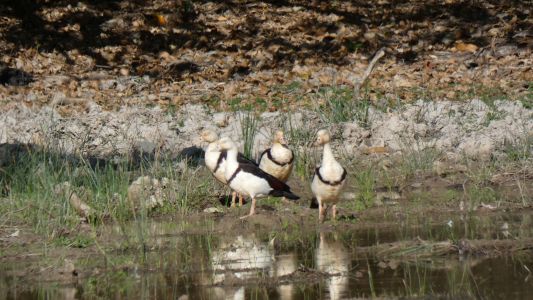 |
|
For our evening constitutional we visited the small lagoon
a couple of hundred metres to our west. The resident white-headed shelducks
entertained us. We tried in vain to follow the birds which occasionally
flew from tree to tree.
A very leisurely half hour to circumnavigate. |
| | | |
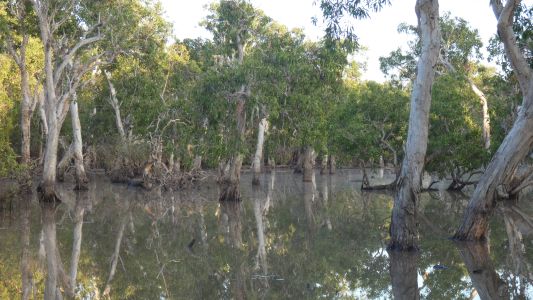 |
|
Next morning we went in search of a lagoon to our north
west. Marked on maps, about a km. A very different lagoon, with trees in
the middle and few lilies. The bird life was well hidden. |
| | | |
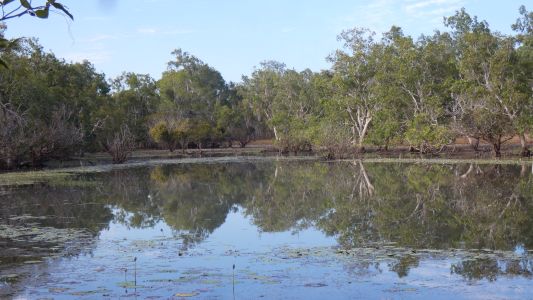 |
|
We struggled to get close enough through pig modified mud
and trees but could see enough of the open water. We walked around this
lagoon also, then home by 9am for a lazy day. |
| | | |
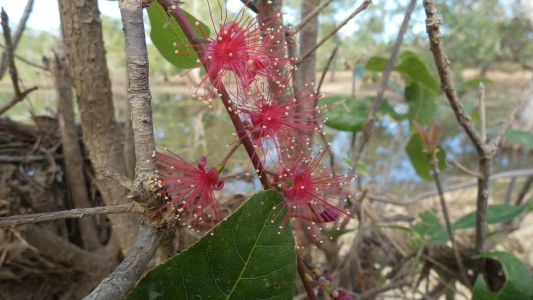 |
|
Partway round we decided that if the birds were going to be
elusive we could admire flowers. |
| | | |
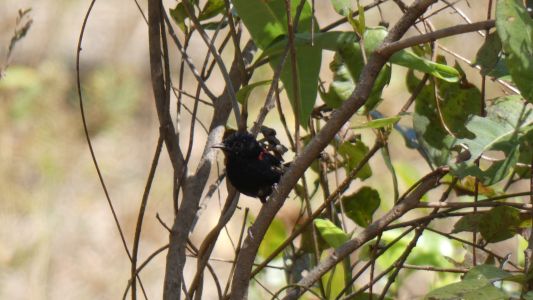 |
|
The bird book says red-backed wrens are common. This is the
first we've seen. A hint of excitement as we work out what it is. The bird
book says "unlike any other Australian bird". We spotted it first through
the open door of the truck. |
| | | |
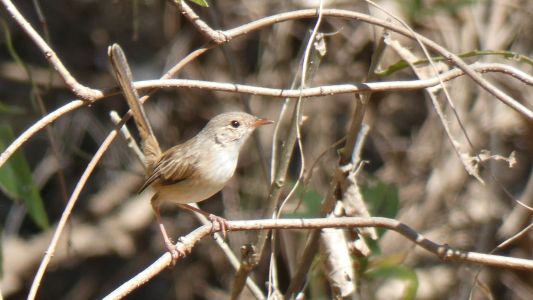 |
|
The females were easier to take a pic of. Wrens have very
distinctive tail feathers. We've never really noticed the colour previously.
In our bird book most female wrens have dark or bluish tail feathers. The
re-backed wren has light coloured, much the same as the rest of its plumage. |
| | | |
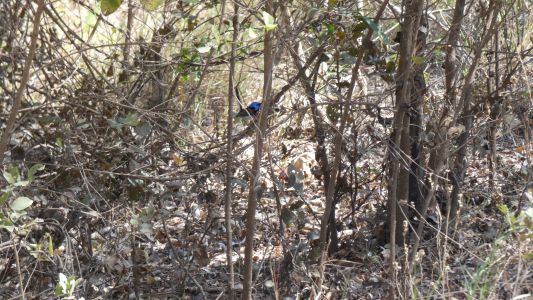 |
|
In the same small flock was this male variegated wren. We
hope they will return.
Wrens, along with the majority of birds, are described as "sedentary". We
have no idea of how extensive the area they normally occupy is. Unhelpful is
the description of red-backed wren as "probably sedentary". Its also common. |
| | | |
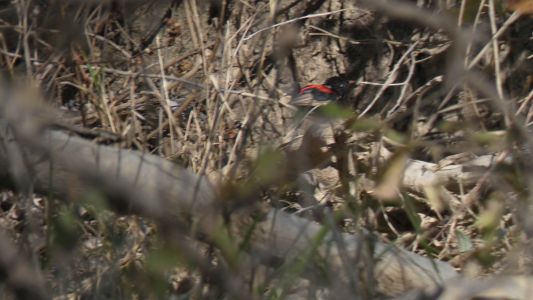 |
|
Hard to see, the male red-backed wren again. By the time
the camera is lined up they've usually moved. |
| | | |
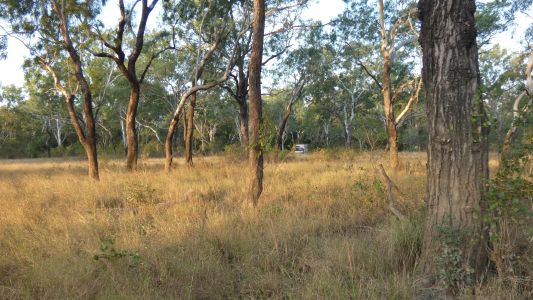 |
|
I tried following the flock before the sun set, to no
avail. A quick look back to make sure the truck is still where I left it.
Its easy to become disoriented and lost. |
| | | |
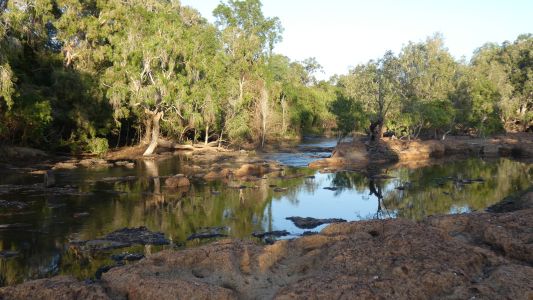 |
|
Next morning we try downstream to find a crossing into the
widening space between our small channel and the main channel of the
Normanby River. We are successful with a little bit of paddling across the
rocky bottom. It is these rocks which form a barrier to create the
waterhole. |
| | | |
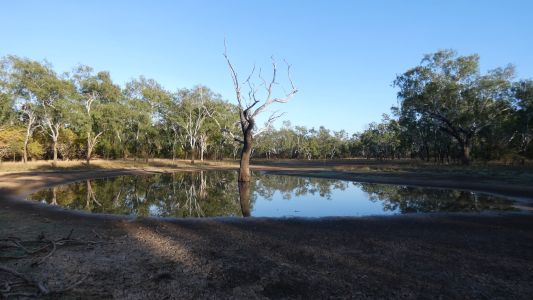 |
|
There's another, rather odd shaped, lagoon, visible on
satellite pics but not on maps, a couple of hundred meters away from the
river. Almost opposite our campsite, but a km walk including the river
crossing. The lagoon would be either deep or shallow, there is no evidence
of the light green colour which lilies seem to have on satellite pics.
Alas, its shallow. An almost non-existent pool. Something more resembling
a roundabout with a tree in the middle than a heavily populated lagoon.
Not quite what we expected, but we enjoyed the walk, and not being eaten
by crocs when crossing the river. |
| | | |
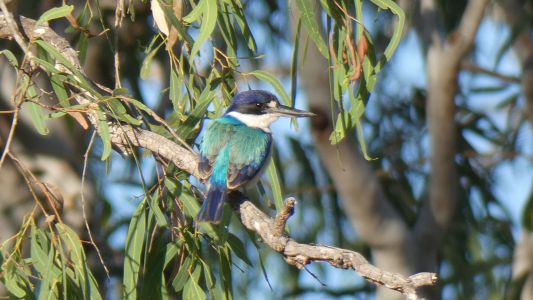 |
|
Plus, there's always a surprise. Its a forest kingfisher.
We've seen many. We've admired their colours. But never quite seen in this
light, and never seeing the beautiful irridescence and subtlety of different
blues. |
| | | |
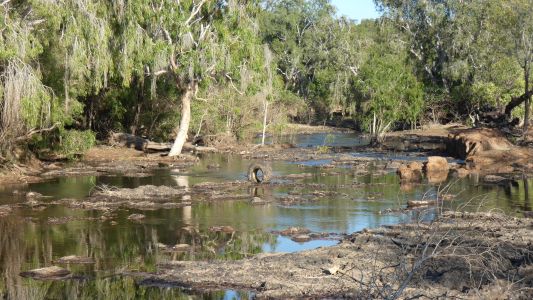 |
|
We returned to the river crossing simply following the
tracker. We wondered, as one does, who had put the tyre in the middle of the
river, and for what end. Perhaps someone fishing used it as a seat, though a
less likely fishing spot I can't imagine. Probably
not part of an entertainment park for crocs! |
| | | |
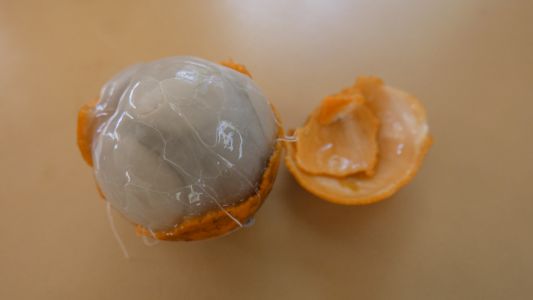 |
|
Near the campsite, and scattered along the riverside, are
fruit trees. We've seen them previously, usually the empty skins under the
bush. We opened one of the orange fruits. Moist inside, segmented, we
decided it was probably good eating, but we refrained. |
| | | |
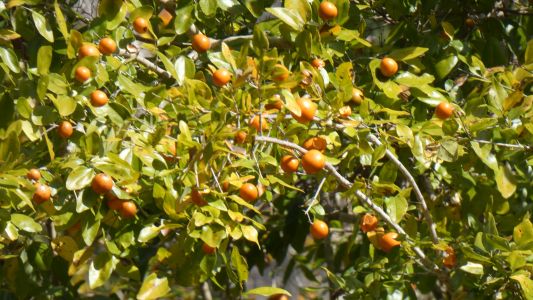 |
|
The bushes were heavy with fruit. We'll ask.
One opinion, from a passing visitor, was that it was quinine, but we
don't know. |
| | | |
| Lakefield National Park - Welcome Waterhole |
 |
August 14 - 15 2019 |
| | | |